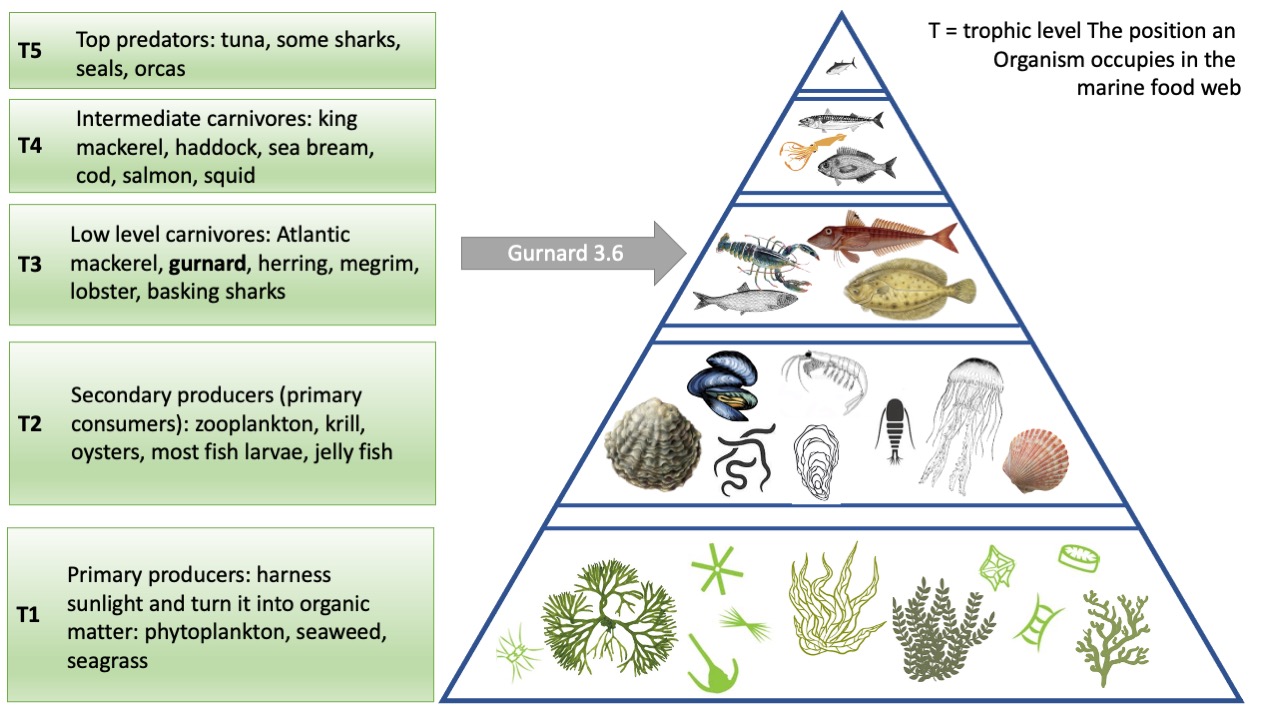Sustainability of the Red Gurnard in Ireland
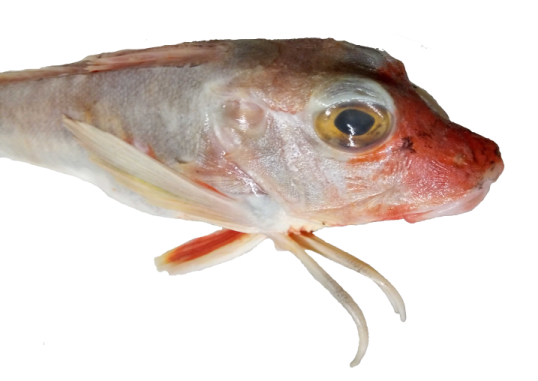
- Sustainability rating: ?
- MSC rating: 2
- Recommended minimum size: 24cm
- Season: avoid spring to early summer
- Best: July to November
- Fishing method: by-catch in demersal trawls
Gurnards are non-quota species and were often discarded due to low market demand. Currently taken as bycatch in demersal trawl fisheries, red gurnard is a fast-growing fish which matures early (within 2-3 years) at a large size (commonly 24cm), hence often considered a sustainable choice of fish.

The issue with this fish is that there is no detailed stock assessment for the species due to lack of data, and total catches are unknown. More research is needed to obtain a better understanding of the impact of fishing on the stock and to provide information for its sustainable management especially if the species is to become commercially targeted. This is a very likely trend as it is believed and argued that gurnard stocks are in good shape due to stocks not being exploited in the past, and the fact that gurnard are early maturing and fast-growing. Even though the IUCN (International Union for the Conservation of Nature) have not evaluated this species in Irish and UK waters, the global population is categorised as "Least Concerned". Moreover, all species of gurnard are currently promoted as a sustainable fish to eat, with the theory being that eating gurnard will take the pressure off over-exploited species such as haddock and cod.
However, the risk of over-exploitation of this species is the lack of a specific management plan. This means there are no catch limits (no quota), which is concerning for any species where data are so limited. Even though landings and abundance of the red gurnard in recent years appear to be broadly stable, avoid eating immature fish (less than 24cm) and fresh (not previously frozen) fish caught during the spawning season (early summer).
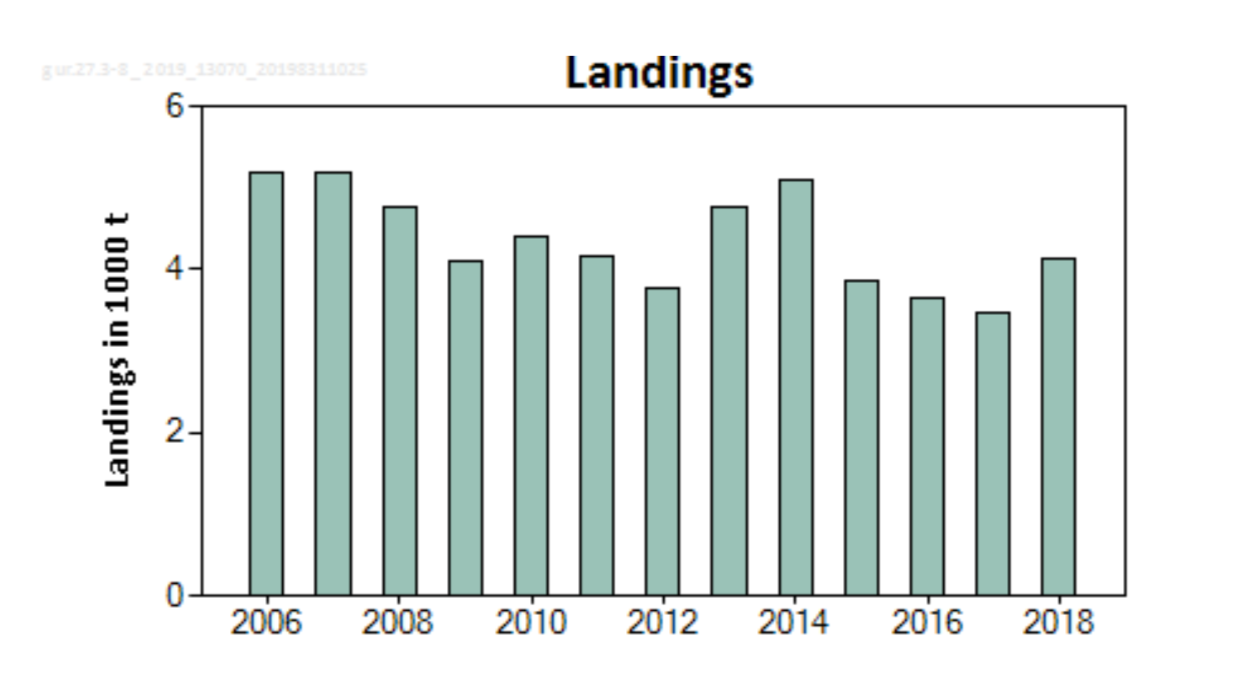
The issue with this species is that landings information is of limited use as several countries used report landings of mixed gurnards (there are three common species in Irish and UK waters). Since 2006, reporting at a species level has improved and landings have been between 3,311 tonnes and 5,049 tonnes annually for red gurnard. Data on abundance come from a number of surveys in the stock area, each focussing on a specific area of red gurnard distribution. In the North Sea, there appears to be an increase in abundance. In the Eastern Channel, it is fluctuating widely, with a weak decline. In the Celtic Sea and Bay of Biscay there has been a small increase.

For stocks with no indication of the fishing mortality in relation to proxies, and with no marked positive trends shown in stock indicators, ICES considers that a precautionary reduction of catches should be implemented every three years. The precautionary buffer was last applied in 2019.
Therefore, ICES advises that landings should be no more than 2,894 tonnes in each of the years 2020 and 2021. But there is no total allowable catch. This is also due to the very variable discard rates between 14% and 94% which are clearly not fully quantified. The EU Landings Obligation does not apply to this stock, as it is not subject to catch limits which consequently means that there is no minimum conservation reference size set for this species either. However, size at first maturity is 23-25cm when the red gurnard is around 3 years old so a lot of countries advice consumers against purchasing any immature fish that is less than 24cm.
Scientists state that the stock structure of red gurnard is not fully understood, and further investigations are needed to progress on stocks boundaries such as morphometric studies, tagging and genetic population studies.
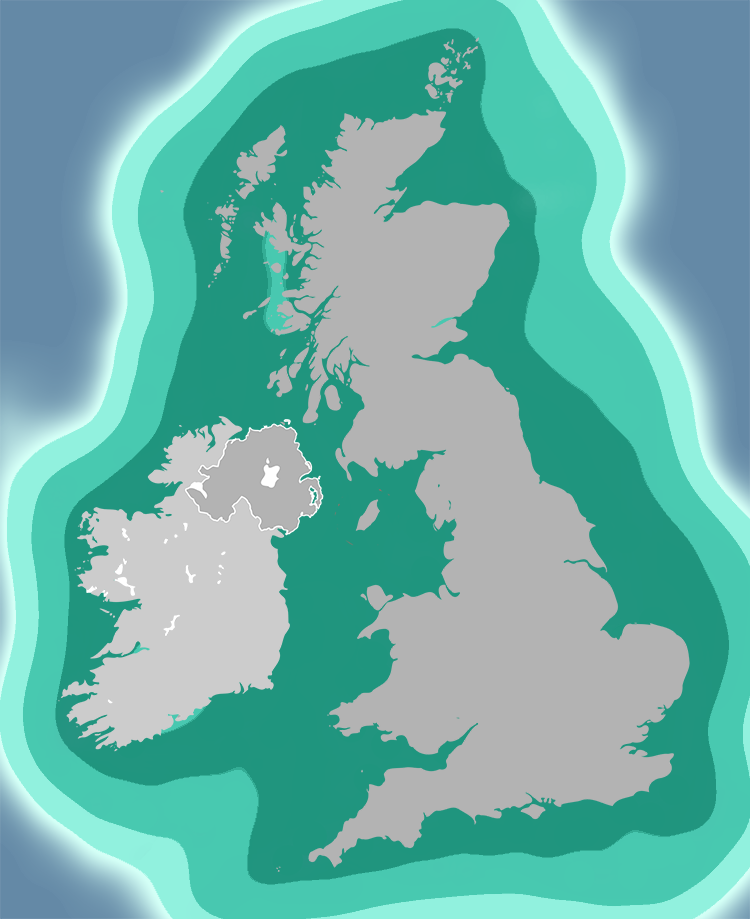
Red gurnard is mainly caught as bycatch by demersal trawlers in mixed fisheries. Most landings are by France, with some by Belgium, the Netherlands and the UK.
Because of its low market value, gurnard hasn’t traditionally been a commercially targeted fish: it would have been taken as by-catch by trawlermen and often discard. This has changed since chefs since Rick Stein have sung its praises, it has become more popular and the price has crept up, leading to fears that it could suffer from overfishing – particularly since it’s a non-quota fish, which means that fishermen can land as much as they like.
Still: it is very much an under-utilised fish and therefore we decided to promote it in one of our recipes. One of the project’s aims is to highlight alternative fish to cod and salmon that are very tasty and that occur in our local waters. When eaten moderately and with awareness red gurnard is a good and sustainable choice.
The image below shows the fishing method of demersal trawling the main method through which gurnard is caught predominantly as by-catch.
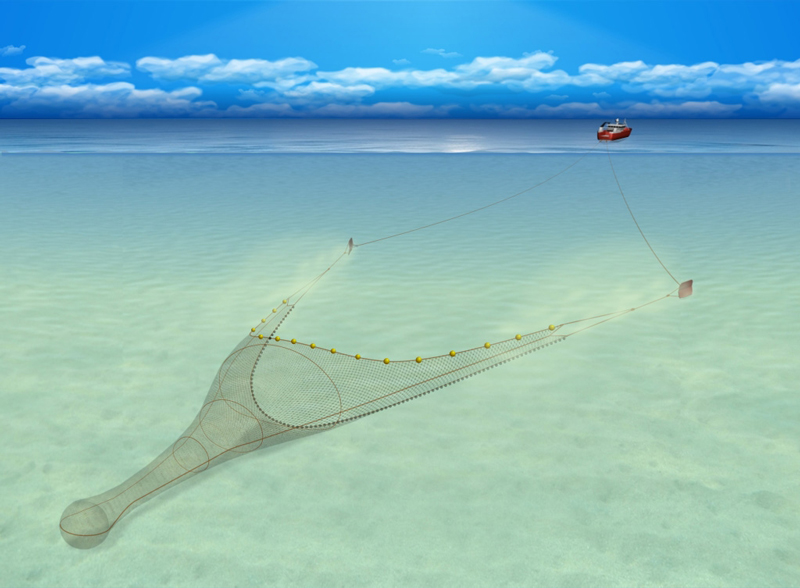
Gurnard in the Marine Food Pyramid
